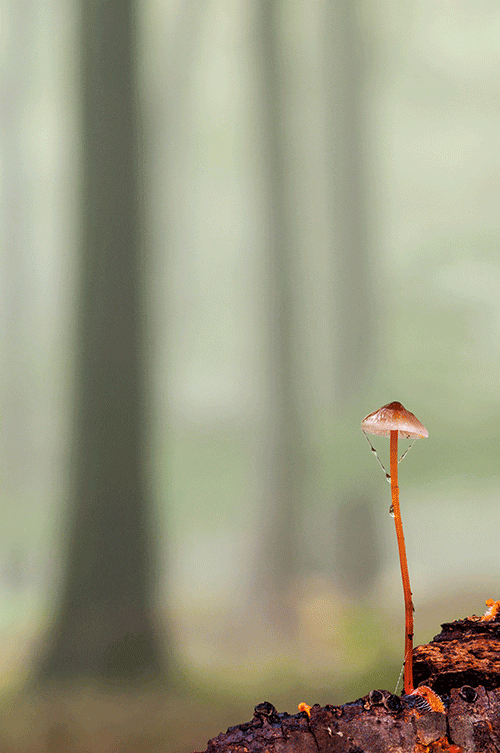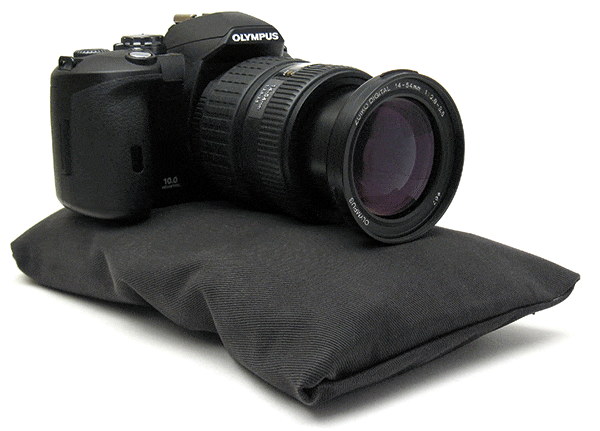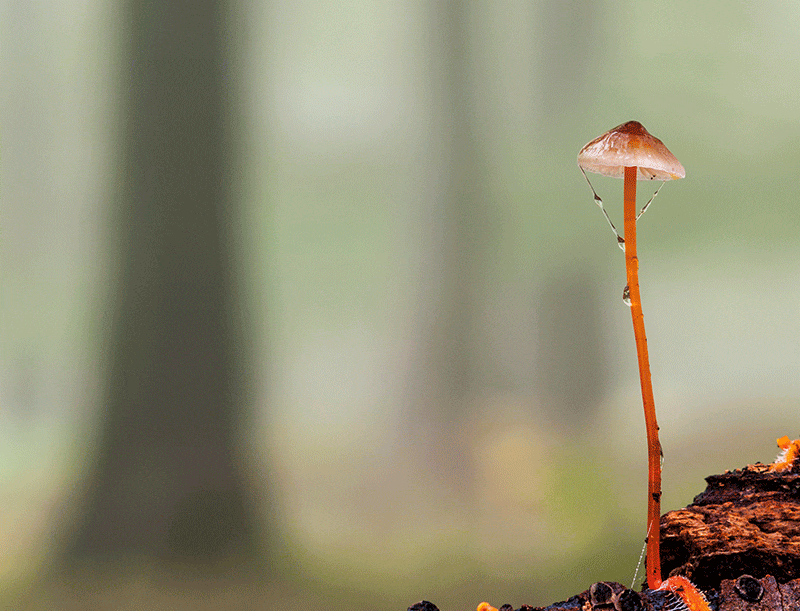Unless I’m out hiking or looking for a specific subject, I very rarely walk great distances taking a shot here and another there. I much prefer to work a small area or subject and only leave when I am satisfied that all possibilities have been exhausted.
I adopt the same approach with my workshops, forcing everyone to slow down and really look, even before they take their cameras out of their bags. My ethos has always been that the longer you work an area, the more images you’ll find and your pictures will be stronger for it.
This image, which went on to win the Botanical Britain category at the British Wildlife Photography awards in 2013, is a case in point. Taken in King’s Wood in Kent, which is one of southern England’s largest woodlands, I spent five days concentrating on an area no bigger than around 900m2. I could quite easily have walked and walked, looking for pretty much anything that caught my attention, but instead I remained in a very small area, often scrambling around on all fours or lying on damp leaf litter, searching for tiny mushrooms, colourful leaves and patterns which might work well for close-up photography.

‘In the Shadow of Giants’. Robert’s winning image of a saffron-drop bonnet mushroom. Nikon D300, 105mm, 3secs at f/11, ISO 200, tripod, cable release, mirror lock
The best way I can describe it is like a bird looking for a worm. It concentrates its efforts on its immediate surroundings and isn’t constantly looking around. More often than not the subject I chose would be dictated by the play of light within the woodland, such as a shaft of sunlight backlighting a leaf or shadows of branches being cast onto the grey bark of a trunk.
As the days went by I noticed tiny saffron-drop mushrooms that littered the forest floor. I became increasingly taken by these tiny organisms being overshadowed by the huge beech trees and the symbiotic relationship between the two. Without one, the other cannot exist, so with this in mind I turned my attention to illustrating this as best I could.
In order for the image to succeed, I knew I had to illustrate the relationship between the trees and fungus. A simple close-up portrait wasn’t going to work and would, most certainly, not have given the viewer any indication of what I was attempting to achieve. In order to accomplish this I chose my Nikon AF-S VR Micro-Nikkor 105mm f/2.8G IF-ED. The lens would not only permit sufficiently close focus, but due to it being a moderate telephoto it would compress the perspective and make the trees a dominant feature in the final photograph. Importantly, due to its relatively narrow angle of view, it would also help exclude any distracting sky.
With my camera mounted on my tripod I carefully edged it closer to the mushroom. I noticed the water droplets caused by the mist, and a mere nudge of the dead branch upon which it grew or, indeed, my own breath would cause them to fall. I think the image would still have worked, but it’s little details such as these that really make a photograph. Anyone who has photographed a dew-laden spider’s web close-up will understand just how exhausting it is. You breathe in when looking through the viewfinder to make any adjustments, and breathe out (with your head turned to one side) when depressing the cable release.
I then spent a lot of time ensuring that the camera back (or film plane) was square with the stem of the mushroom since depth of field at such close quarters is extremely shallow. Also, once you’re parallel with the most dominant aspect of the subject, you can be confident that, pretty much whatever aperture you choose, it will be in sharp focus. You then have greater freedom of aperture selection and, ultimately, how sharp the background will be rendered.
With a cable release in one hand and a small reflector in the other (to add just a little fill-light to the stem and cap),
I took a number of shots at various aperture settings. I wanted to get just the right amount of depth of field so
the trees were recognisable, yet not so sharp that they conflicted with the main subject – the fungus.
After a while I inspected the images on the back of the camera, checking sharpness and exposure, and felt that something wasn’t quite right. I then noticed what it was. The cap of the fungus was touching the edge of the right-hand side of the tree, but I felt it needed to protrude. So I moved the tripod a fraction and, content with the revised composition, repeated the exercise. I only left once I was completely satisfied – opportunities like this don’t come around too often so you have to make the most of them.
Close-up technique

I would argue that close-up photography requires a greater degree of perfecting one’s technique than any other field of nature photography. When capturing images of animals (especially when they’re actively doing something), one can be excused for minor imperfections. You’re recording a moment in time and the impact of the image can often outweigh composition.
With close-up photography, however, every part of the frame plays an integral role in the success of the image. With such a limited depth of field, just a couple of millimetres off can result in it being consigned to the trash. Take your time. Use a tripod or beanbag, fire the camera using a remote release and, should your camera have one, mirror-lock. These things will increase your chances of producing consistently sharp images. It’s surely better to go home with one photograph you can be proud of than a dozen that will never see the light of day.







